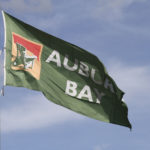 What are Home Owners’ Association fees and Residents’ Association fees? And what exactly does a community association do?
What are Home Owners’ Association fees and Residents’ Association fees? And what exactly does a community association do?
What is a Home Owners’ Association?
The Home Owners’ Association (HOA) is a non-for-profit organization, within a community, that establishes control over beautifying the community, the maintenance of greenspaces and the entrance of the community. As well, the HOA manages any community amenities or buildings, lakes, tennis courts, spray parks, playgrounds, etc. within the community. Many newer communities in Calgary implement and charge an HOA fee.
Are HOA fees mandatory?
The Homeowners’ Association fee is a mandatory fee which is registered on the title of the property. This means that this caveat ‘stays’ with the home if it changes ownership. It also means that if the owner does not pay these HOA fees, legal action can be taken.
How much are HOA fees?
If the owner does not pay these HOA fees, legal action can be taken
Who determines and runs the HOA?
Usually, the developer determines the HOA fees when the community is planned. At some point, the association, run by volunteers, takes over the responsibility of the HOA, and fees may change. Since the HOA takes over some maintenance in a community, the City of Calgary is no longer responsible for this maintenance. This reflects, or should reflect, in the property taxes in these communities.
Once established, HOA’s are run by volunteers, under a board of directors, and they operate under the registered bylaws of a non-profit organization.
What is a Residents’ Association?
The Residents’ Association (RA) works very much the same as the Home Owners’ Association. Also, the Residents’ Association maintains greenspaces and amenities, and is also, usually, established by the developer. Just like the HOA, the RA is run by volunteers, and operates under the bylaws of a non-profit organization. And similar to HOA fees, the RA fees are set by the developer at the time of planning the community, or part of the community. Sometimes RA’s are more associated with a building or clubhouse in the community, whereas HOA’s are sometimes more focused on beautification of a community.

What is a Community Association?
Community associationa are not mandatory to join
Community associations are not registered on title, and because memberships for community associations are not mandatory, they are usually very inexpensive. Many community associations have a website, while some also run a Facebook page along with their website. Some community associations only run a Facebook page for events and community updates. The City of Calgary gives a full list of all the community associations in Calgary.
How does one find out if a community has any fees?
The title of the home shows if any Homeowners’ Association or Residents’ Association fees are attached to the property. Title can be pulled at the Land Titles Office. The next place to check if a community has any fees is its website. The individual website of every association tells how much the fees are and where the fees are spent.
The title of the home shows if any Homeowners’ Association or Residents’ Association fees are attached to the property
There are some complications when it comes to Homeowners’ or Residents’ Associations, though. Some communities have more than one of these associations. For example, Aspen Woods is a community with several different associations.
Do renters pay any HOA or RA fees?
In essence, the owner is responsible for any HOA or RA fees. After all, the owner is on the title of a home. Whether the homeowner forwards any fees to the renter is determined by the landlord. However, some communities have a lake and clubhouse. Is the owner, now landlord, allowed to give the key to the clubhouse to the renter? Different arrangements can be made between landlord and tenant.
Are HOA fees included in condo fees?
Condo owners pay condo fees, separate from any association fees. Homeowners’ Associations are different from Condominium Corporations. They are both separate entities, with different purposes. The condo fees go towards the maintenance and operation of the condo complex. This can include amenities such as common areas, a small library, a games room, guest suites, fitness rooms, craft areas etc.
Condo owners pay condo fees, separate from any association fees
Neither association is voluntarily. Fees must be paid, and if an owner does not pay, a legal suit can be held against the owner. Both type of associations do have the same setup. First, the community is developed and the developer creates the Homeowners’ Association. Next, a condo complex gets built, and the builder puts a condo corporation in place. Both associations are registered on title of every property. So, living in a condo creates the responsibility of having to pay two different types of mandatory fees.
A few random examples of Calgary community websites for reference:
The residents’ association of Kincora says: “Our main objective is to maintain all entrance features, green spaces, the gazebo and Kincora tower. We do not however have any oversight of the natural greenspace areas (ravines) or pathways throughout these areas.”
The community website of Kincora is “a volunteer group headed by a board who come from the local neighbourhood. They commit time to help develop a better and more welcoming community”
The Evergreen Residents’ Association says: “The annual mandatory fees collected by the Evergreen Residents’ Association are used for the purpose of ongoing operations and maintenance of the 17 community entrance features and feature park sites. These sites were originally constructed by Genstar as additional amenities for the community, above and beyond what the City of Calgary would request as part of a typical community development. As such, the City does not provide upkeep or maintenance of these sites; that is the sole responsibility of the ERA.”
Evergreen also has a community association: The Calgary Evergreen Community Association (CECA) is a volunteer non-for-profit organization formed by the residents of Evergreen whose focus is “Working Together for Our Community’s Future”. Our time is spent building a sense of community where members have a sense of belonging, ensuring our community is a safe place to live-work-play, and are working on behalf of all residents in Evergreen on important issues. We want to build things for you like outdoor ice rinks and community halls!

Auburn Bay’s Residents’ Association perfectly lays out the difference between the Residents’ Association and the community association. The Residents’ Association manages, maintains, operates the amenities around Auburn House, including the park and the lake. The community association’s purpose is to protect the interests of the neighbourhood by providing residents a voice on community issues, through voluntary membership.
As mentioned before, some communities have more associations. Aspen Woods is one example. On the SCA Community Association website it says: there are dozens of Homeowners’ Associations or Residents’ Associations in Aspen – none of which are administered by us at the community association. Please contact the original developer of each area for more information. Good Luck!
Cranston also explains the difference between its Residents’ and community associations. As the website states, the community association has “a representative role in meeting the needs of the community. The community association works to protect the interests of the neighborhood, including surrounding developments, transportation, zoning, and a wide assortment of community issues. Membership is voluntary and the fee is minimal. “
Cranston’s Residents’ Association states: “The Cranston Residents’ Association supports year-round maintenance to Century Hall, the Art Park, The Windmill, the Riverstone Gazebo, as well as several decorative corners throughout Cranston. In addition, the RA partners with Brookfield Residential to maintain various parks, pathways, until city turnover is complete.”
The community of Tuscany also has a community association stating:” The Tuscany Community Association, formed in April of 2000, is a volunteer-driven body committed to addressing community issues, planning community events and recreation activities, and providing effective representation in civic matters. Membership in the Tuscany Community Association is voluntary and costs $25 per year. A single membership covers a household for participation in TCA-sponsored activities, and entitles one vote at the AGM.”
Tuscany The Tuscany Residents’ Association “exists to service the residents of the Tuscany and Tuscarora communities through programming and amenities, including tennis courts, splash park, skateboard park, gymnasium, rinks and more!”
A last example is an HOA where residents didn’t pay their HOA fees. In 2021, Skyview Ranch came in the news regarding this issue: Hundreds of homeowners in Calgary’s Skyview Ranch being sued for unpaid annual fees.